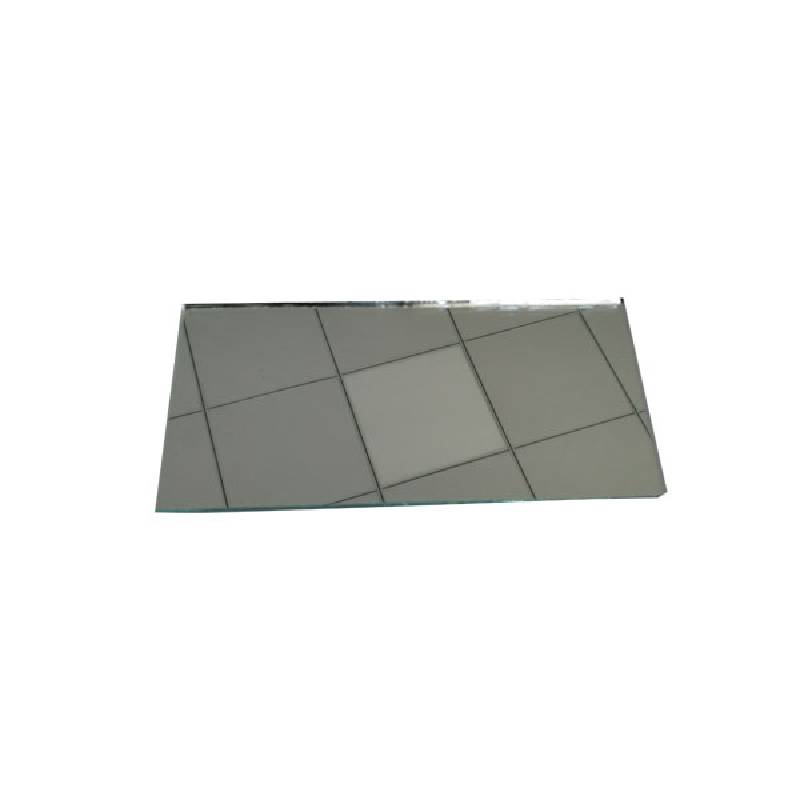Understanding Plain Float Glass Characteristics and Applications
Plain float glass, a fundamental type of glass widely used across various industries, is known for its optical clarity and versatility. The manufacturing process of plain float glass involves floating molten glass on top of molten tin, resulting in a smooth, flat surface with minimal distortion. This unique technique grants the glass its name and is essential in ensuring high-quality standards.
One of the primary characteristics of plain float glass is its transparency. With a light transmittance of over 90%, it allows for excellent visibility, making it an ideal choice for windows in residential and commercial buildings. Its clarity is a critical factor for architects and designers who seek to maximize natural light while maintaining aesthetic appeal. Moreover, plain float glass is often used as a substrate for various coatings and treatments that enhance its properties.
Another noteworthy feature of plain float glass is its uniform thickness and flatness. The manufacturing process ensures that the glass is consistent in size and shape, which is crucial for applications requiring precision. This uniformity is particularly important in the production of glass sheets for automotive windows, where any distortion could compromise visibility and safety.
Moreover, plain float glass is highly adaptable. It can be cut, tempered, laminated, or coated with different materials to suit specific needs. This adaptability extends its applications beyond mere windows. It is commonly used in glass doors, partitions, and display cases in retail environments. In addition, the glass is frequently used in furniture design, where its sleek surface can complement various styles and aesthetics.
plain float glass
In terms of safety, plain float glass is typically regarded as fragile. However, advancements in technology have led to the development of safety glass variants. Laminated glass, for instance, consists of multiple layers bonded together, providing enhanced durability and resistance to impact. Tempered glass is another alternative, treated with heat to increase its strength significantly. These tailored versions of plain float glass address safety concerns in environments such as schools, hospitals, and commercial buildings where the risk of breakage may be higher.
The energy efficiency of plain float glass is another consideration that is gaining importance in modern construction. While it has excellent light transmittance properties, plain float glass does not inherently possess reflective qualities, which can lead to heat gain in warmer climates. As a result, many manufacturers now offer low-emissivity (Low-E) options. These innovative coatings reduce the amount of infrared and ultraviolet light that can pass through the glass without compromising the overall brightness of the interior space. Consequently, they contribute to energy savings and improved comfort for occupants.
Environmental factors are also a vital aspect of the production and use of plain float glass. The glass industry has been making strides towards sustainability by incorporating recycled glass in manufacturing processes. Recycled glass contributes to reduced energy consumption and minimizes waste, presenting an eco-friendly alternative to traditional glass production methods.
Furthermore, plain float glass plays a significant role in the packaging industry. It is commonly used for food and beverage containers due to its inert nature, which ensures that it does not react with the contents inside. Its impermeability helps preserve freshness and quality, making it a preferred choice among manufacturers.
In conclusion, plain float glass is more than just a transparent material; it is a versatile and integral component of numerous industries. Its optical clarity, uniformity, and adaptability make it suitable for a wide range of applications, from architectural designs to safety solutions and packaging. With ongoing advancements in technology and a growing emphasis on sustainability, the future of plain float glass promises to remain bright. As industries continue to innovate, plain float glass will undoubtedly adapt, finding new uses and functions in our ever-evolving world.
 Afrikaans
Afrikaans  Albanian
Albanian  Amharic
Amharic  Arabic
Arabic  Armenian
Armenian  Azerbaijani
Azerbaijani  Basque
Basque  Belarusian
Belarusian  Bengali
Bengali  Bosnian
Bosnian  Bulgarian
Bulgarian  Catalan
Catalan  Cebuano
Cebuano  Corsican
Corsican  Croatian
Croatian  Czech
Czech  Danish
Danish  Dutch
Dutch  English
English  Esperanto
Esperanto  Estonian
Estonian  Finnish
Finnish  French
French  Frisian
Frisian  Galician
Galician  Georgian
Georgian  German
German  Greek
Greek  Gujarati
Gujarati  Haitian Creole
Haitian Creole  hausa
hausa  hawaiian
hawaiian  Hebrew
Hebrew  Hindi
Hindi  Miao
Miao  Hungarian
Hungarian  Icelandic
Icelandic  igbo
igbo  Indonesian
Indonesian  irish
irish  Italian
Italian  Japanese
Japanese  Javanese
Javanese  Kannada
Kannada  kazakh
kazakh  Khmer
Khmer  Rwandese
Rwandese  Korean
Korean  Kurdish
Kurdish  Kyrgyz
Kyrgyz  Lao
Lao  Latin
Latin  Latvian
Latvian  Lithuanian
Lithuanian  Luxembourgish
Luxembourgish  Macedonian
Macedonian  Malgashi
Malgashi  Malay
Malay  Malayalam
Malayalam  Maltese
Maltese  Maori
Maori  Marathi
Marathi  Mongolian
Mongolian  Myanmar
Myanmar  Nepali
Nepali  Norwegian
Norwegian  Norwegian
Norwegian  Occitan
Occitan  Pashto
Pashto  Persian
Persian  Polish
Polish  Portuguese
Portuguese  Punjabi
Punjabi  Romanian
Romanian  Russian
Russian  Samoan
Samoan  Scottish Gaelic
Scottish Gaelic  Serbian
Serbian  Sesotho
Sesotho  Shona
Shona  Sindhi
Sindhi  Sinhala
Sinhala  Slovak
Slovak  Slovenian
Slovenian  Somali
Somali  Spanish
Spanish  Sundanese
Sundanese  Swahili
Swahili  Swedish
Swedish  Tagalog
Tagalog  Tajik
Tajik  Tamil
Tamil  Tatar
Tatar  Telugu
Telugu  Thai
Thai  Turkish
Turkish  Turkmen
Turkmen  Ukrainian
Ukrainian  Urdu
Urdu  Uighur
Uighur  Uzbek
Uzbek  Vietnamese
Vietnamese  Welsh
Welsh  Bantu
Bantu  Yiddish
Yiddish  Yoruba
Yoruba  Zulu
Zulu 

